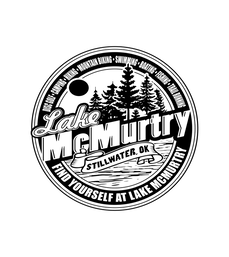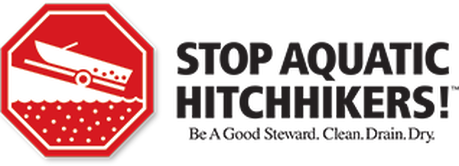Clean. Drain. Dry. Dispose.
Spread the word and help keep our lake protected from aquatic invasive species!!
What Are Aquatic Invasive Species?
Aquatic invasive species (AIS) (sometimes called exotic, invasive, nonindigenous or non-native) are aquatic organisms that invade ecosystems beyond their natural, historic range. Their presence may harm native ecosystems or commercial, agricultural, or recreational activities dependent on these ecosystems. They may even harm our health.
Unintentional introductions occur when invasive species are transferred accidentally. For instance, zebra mussels can be spread when ballast water used for ship stability is exchanged.
In fact, aquatic nuisance species can be spread many ways including ships, boats, barges, aquaculture, aquatic recreation (fishing, hunting, boating, diving, etc.), water gardening, seaplanes, connected waterways and many other pathways. Through these and other means, thousands of terrestrial and aquatic invasive species have been introduced into our country, costing us billions annually.
Unintentional introductions occur when invasive species are transferred accidentally. For instance, zebra mussels can be spread when ballast water used for ship stability is exchanged.
In fact, aquatic nuisance species can be spread many ways including ships, boats, barges, aquaculture, aquatic recreation (fishing, hunting, boating, diving, etc.), water gardening, seaplanes, connected waterways and many other pathways. Through these and other means, thousands of terrestrial and aquatic invasive species have been introduced into our country, costing us billions annually.
Lake McMurtry Aquatic Invasive Species
Several aquatic invasive species have been identified in our lake. It's up to us to help stop the spread of these invasive species to other bodies of water.
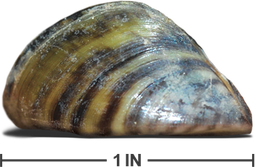
Zebra Mussels
Impacts
Zebra mussels can be a costly problem for cities and power plants when they clog water intakes. Zebra mussels also cause problems for lakeshore residents and recreationists; for example, they can:
- Identification
Impacts
Zebra mussels can be a costly problem for cities and power plants when they clog water intakes. Zebra mussels also cause problems for lakeshore residents and recreationists; for example, they can:
- attach to boat motors and boat hulls, reducing performance and efficiency,
- attach to rocks, swim rafts and ladders where swimmers can cut their feet on the mussel shells, and
- clog irrigation intakes and other pipes.
Nearby Species Threatening Lake McMurtry
Yellow floating heart has been identified at nearby water bodies, such as Lake Carl Blackwell, and are threatening to infiltrate Lake McMurtry. It's extremely important for boaters coming from Lake Carl Blackwell and going to Lake McMurtry to follow the boat washing guidelines listed below.
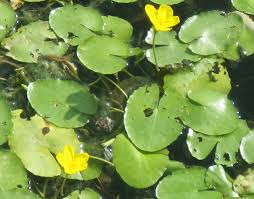
Yellow Floating Heart
Identification
Stem/Roots: Nymphoides peltata is a rooted, perennial species with long branched stolons (up to 2 meters) that lie just below the water surface. Multi-leaved "plantlets" are produced at the nodes along with roots.
Leaves: Leaves are floating, round to heart-shaped (cordate) (3-12 cm in diameter) which resemble those of waterlilies (Godfrey and Wooten 1981; Newman 2000). Leaves are green to yellow-green and have slightly wavy margins. Undersides of leaves are often purple.
Flowers: Two to five bright yellow, five-petaled flowers (2-4 cm in diameter) arise from each node as simple umbels with shallowly fringed petals borne above the water surface. Plants flower between May and October depending on water temperature.
Fruit/Seeds: Each flower produces one beaked capsule (2.5 cm), dispersing few to many smooth, flat, shiny seeds with margins of stiff hairs
Impacts
Nymphoides peltata can form dense floating mats of vegetation that block sunlight from reaching native plants and algae. Depending on the extent of the yellow floating heart population, the algae population could decline and disrupt the food web.
The reduction in native plant species degrades the habitat and may reduce access to food for fish and wildlife. If the population of yellow floating heart is large enough, fish and other wildlife may be forced to relocate. Dense stands of N. peltata can cause slow-moving water to become stagnant and the water beneath the mats to have a low oxygen concentration. Dense surface mats of N. peltata can hinder the air exchange between the water’s surface and the atmosphere. These areas of stagnant waters can be an ideal location for mosquitos to breed.
Identification
Stem/Roots: Nymphoides peltata is a rooted, perennial species with long branched stolons (up to 2 meters) that lie just below the water surface. Multi-leaved "plantlets" are produced at the nodes along with roots.
Leaves: Leaves are floating, round to heart-shaped (cordate) (3-12 cm in diameter) which resemble those of waterlilies (Godfrey and Wooten 1981; Newman 2000). Leaves are green to yellow-green and have slightly wavy margins. Undersides of leaves are often purple.
Flowers: Two to five bright yellow, five-petaled flowers (2-4 cm in diameter) arise from each node as simple umbels with shallowly fringed petals borne above the water surface. Plants flower between May and October depending on water temperature.
Fruit/Seeds: Each flower produces one beaked capsule (2.5 cm), dispersing few to many smooth, flat, shiny seeds with margins of stiff hairs
Impacts
Nymphoides peltata can form dense floating mats of vegetation that block sunlight from reaching native plants and algae. Depending on the extent of the yellow floating heart population, the algae population could decline and disrupt the food web.
The reduction in native plant species degrades the habitat and may reduce access to food for fish and wildlife. If the population of yellow floating heart is large enough, fish and other wildlife may be forced to relocate. Dense stands of N. peltata can cause slow-moving water to become stagnant and the water beneath the mats to have a low oxygen concentration. Dense surface mats of N. peltata can hinder the air exchange between the water’s surface and the atmosphere. These areas of stagnant waters can be an ideal location for mosquitos to breed.
How You Can Help?
Lake McMurtry Is equipped with boat washing station in both recreation areas.
Follow directional signage.
Follow directional signage.
Clean. Drain. Dry. Dispose.
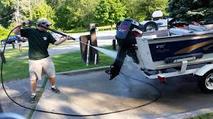
CLEAN off visible aquatic plants, animals, and mud from all equipment before leaving water access
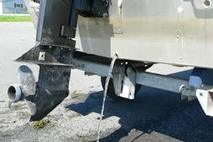
DRAIN watercraft bilge, livewell, motor and other water containing devices before leaving water access.
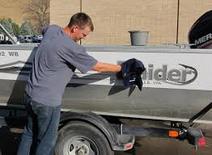
DRY everything for at least five days OR wipe with a towel before reuse.
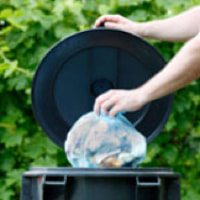
DISPOSE of unwanted bait, worms, and fish parts in the trash. When keeping live bait, drain bait containers and replace with spring or dechlorinated tap water. Never dump live fish or other organisms from one water body into another.
